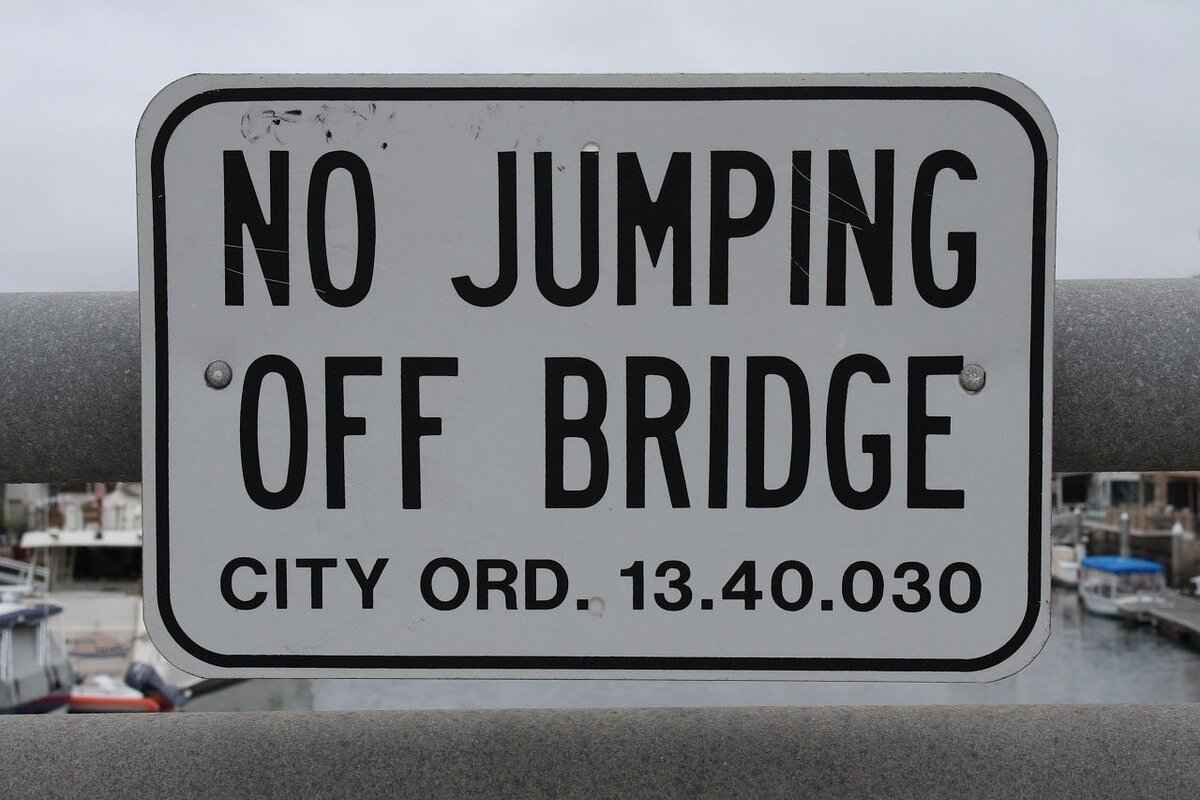This article delves into the legal grounds for initiating a lawsuit aimed at recovering damages resulting from wrongful conduct. It will outline essential concepts, pertinent laws, and practical insights tailored for potential claimants.
Understanding Wrongful Conduct
Wrongful conduct encompasses actions that inflict harm or injury upon another individual or entity. In legal contexts, it is vital to recognize that wrongful conduct can manifest in various forms, including negligence, intentional torts, and strict liability. Each type carries distinct implications and legal consequences.
Types of Wrongful Conduct
- Negligence: Occurs when an individual fails to exercise reasonable care, leading to someone else’s injury.
- Intentional Torts: Involves deliberate actions that cause harm, such as assault or defamation.
- Strict Liability: Imposes responsibility for damages without needing to prove negligence, often seen in product liability cases.
Negligence Explained
Negligence is a fundamental concept in personal injury law. It arises when an individual or entity does not act with the care that a reasonably prudent person would exercise in similar circumstances. To establish a claim of negligence, the following elements must be proven:
- Duty: The defendant owed a legal duty to the plaintiff.
- Breach: The defendant breached that duty.
- Causation: The breach caused the plaintiff’s injuries.
- Damages: The plaintiff suffered actual damages as a result.
Common Examples of Negligence
Real-world scenarios illustrating negligence include:
- Car accidents due to reckless driving.
- Medical malpractice where a healthcare provider fails to uphold the standard of care.
- Slip-and-fall incidents in commercial establishments.
Intentional Torts Overview
Intentional torts are actions undertaken with the intent to cause harm. Common examples include:
- Assault: Threatening harm to another individual.
- Battery: Physical contact that is harmful or offensive.
- Defamation: Making false statements that damage another’s reputation.
Strict Liability Claims
Strict liability is a legal doctrine that holds a party responsible for damages without requiring proof of negligence. This is particularly relevant in product liability cases where manufacturers or sellers are accountable for defective products. For example, if a consumer is injured by a faulty product, the manufacturer can be held liable even if they exercised all possible care in its design and production.
Assessing Damages in Wrongful Conduct Cases
Determining the extent of damages is a crucial aspect of wrongful conduct lawsuits. Damages can be categorized into:
- Compensatory Damages: Designed to reimburse the injured party for losses incurred, such as medical expenses and lost wages.
- Punitive Damages: Aimed at punishing the wrongdoer and deterring future misconduct, typically awarded in cases of gross negligence or intentional harm.
Filing a Lawsuit: Key Steps
The process of filing a lawsuit for wrongful conduct involves several essential steps:
- Gathering Evidence: Collecting relevant evidence, such as witness statements and medical records, is critical to support your claim.
- Consulting an Attorney: Engaging a qualified attorney can significantly impact the outcome of your case. Legal representation is vital for navigating the complexities of the law.
In summary, understanding the legal framework surrounding wrongful conduct is essential for anyone considering a lawsuit. By familiarizing yourself with the types of wrongful conduct, the elements necessary to prove negligence, and the process of filing a claim, you can better navigate the legal landscape and pursue justice effectively.

Understanding Wrongful Conduct
is crucial in the legal landscape, as it encompasses actions that lead to harm or injury to another individual or entity. This term is not merely a legal jargon but a significant concept that affects various aspects of personal and professional interactions. Wrongful conduct can manifest in numerous forms, each carrying different implications and potential legal consequences.
At its core, wrongful conduct includes both negligence and intentional torts. Understanding these categories helps clarify the pathways available for legal recourse. Negligence occurs when an individual or entity fails to exercise a reasonable standard of care, resulting in unintentional harm to another party. For example, in a car accident scenario, if a driver fails to stop at a red light, causing injury to another driver, this could be classified as negligence.
On the other hand, intentional torts involve deliberate actions taken to harm another individual. Common examples include assault, battery, and defamation. These actions are not only harmful but also carry significant legal repercussions, as the intent behind the action plays a critical role in the determination of liability.
- Negligence: Involves failure to act with reasonable care.
- Intentional Torts: Involves deliberate harmful actions.
- Strict Liability: Imposes liability without fault, often seen in product liability cases.
Another important category is strict liability, which holds individuals or companies responsible for damages regardless of intent or negligence. This legal principle is often applied in cases involving defective products or certain animal attacks, where the injured party does not need to prove that the defendant acted negligently.
Understanding the nuances of wrongful conduct is vital for anyone considering legal action. It is essential to identify the specific type of wrongful conduct that occurred in a given situation, as this will dictate the legal strategy and potential outcomes. For instance, cases involving negligence require the plaintiff to establish the four elements of negligence: duty, breach, causation, and damages. Conversely, in cases of intentional torts, the focus shifts to proving the intent behind the harmful action.
Moreover, the implications of wrongful conduct extend beyond the courtroom. They can affect personal relationships, business operations, and public perception. Therefore, recognizing and addressing wrongful conduct proactively can prevent legal disputes and foster a more responsible and ethical environment.
In summary, understanding wrongful conduct is not just about knowing the definitions; it is about grasping the broader implications and legal ramifications that arise from various forms of harm. Whether through negligence, intentional torts, or strict liability, the consequences of wrongful conduct can be significant, making it essential for individuals and businesses alike to navigate these waters carefully.

Types of Wrongful Conduct
Understanding the various types of wrongful conduct is essential for anyone looking to pursue a legal claim. Wrongful conduct encompasses a wide range of behaviors that can cause harm or injury to another party. By categorizing these behaviors, individuals can better identify potential legal claims and understand the underlying principles that govern them.
The primary types of wrongful conduct include:
- Negligence
- Intentional Torts
- Strict Liability
Each of these categories has distinct characteristics and legal implications. Below, we explore these categories in greater detail:
Negligence refers to a failure to exercise reasonable care, resulting in harm to another person. To establish a claim based on negligence, the injured party must demonstrate four key elements:
| Element | Description |
|---|---|
| Duty | The obligation to act with reasonable care towards others. |
| Breach | A failure to meet the standard of care. |
| Causation | Proof that the breach directly caused the injury. |
| Damages | Actual harm or injury suffered by the plaintiff. |
Common examples of negligence include car accidents, medical malpractice, and slip-and-fall incidents. Each of these scenarios illustrates how a lack of reasonable care can lead to significant harm.
Intentional Torts involve deliberate actions that cause harm to another individual. Unlike negligence, where the harm is unintentional, intentional torts are characterized by a willful act. Examples include:
- Assault: The threat of harm that creates fear in the victim.
- Battery: Actual physical contact that causes injury.
- Defamation: False statements that harm an individual’s reputation.
These actions not only cause harm but also carry legal consequences that can result in compensatory and punitive damages.
Strict Liability is a legal doctrine that holds a party responsible for damages without the need to prove negligence or intent. This principle is commonly applied in cases involving defective products or dangerous animals. For instance, in product liability cases, manufacturers and sellers can be held liable for injuries caused by defective products, regardless of whether they exercised reasonable care in their design or manufacture.
In the context of animal attacks, strict liability may apply regardless of the owner’s knowledge of the animal’s dangerous propensities. This means that an owner can be held liable for injuries caused by their pet, even if they had no prior indication that the animal would act aggressively.
Understanding these categories of wrongful conduct is crucial for anyone considering legal action. By recognizing the differences between negligence, intentional torts, and strict liability, individuals can more effectively navigate the legal landscape and pursue appropriate remedies for their injuries.
Negligence Explained
Negligence is a fundamental concept in tort law, representing a failure to act with the level of care that a reasonable person would exercise in similar circumstances. This legal doctrine is crucial for establishing liability when an individual or entity’s lack of care leads to another party’s harm. Understanding negligence requires a thorough grasp of its elements and implications, especially in legal contexts.
The essence of negligence can be broken down into four key elements: duty, breach, causation, and damages. Each element plays a vital role in determining whether a negligence claim is valid.
- Duty: This refers to the legal obligation that one party owes to another to act with reasonable care. For example, drivers have a duty to follow traffic laws and ensure the safety of others on the road.
- Breach: A breach occurs when an individual fails to meet the standard of care expected in a given situation. This could involve reckless driving, failing to maintain a safe environment, or neglecting to provide necessary medical care.
- Causation: This element establishes a direct link between the breach of duty and the injury suffered. It must be proven that the breach was a substantial factor in causing the harm.
- Damages: Finally, the injured party must demonstrate that they suffered actual damages, such as physical injury, emotional distress, or financial loss, as a result of the negligent act.
Negligence manifests in various scenarios, impacting everyday life. Common examples include:
1. Car Accidents: A driver texting while driving causes a collision.2. Medical Malpractice: A doctor fails to diagnose a condition, leading to worsened health.3. Slip and Fall Incidents: A store neglects to clean up a spill, resulting in a customer injury.
In legal proceedings, the burden of proof lies with the plaintiff, who must convincingly demonstrate all four elements of negligence. Courts often rely on the “reasonable person” standard, assessing whether the actions of the defendant align with what a typical person would have done under similar circumstances.
Furthermore, the concept of contributory negligence may come into play, where the injured party’s own negligence contributed to the harm. In some jurisdictions, this can reduce the amount of damages awarded or bar recovery altogether, depending on the degree of fault attributed to the plaintiff.
Understanding negligence is crucial for individuals seeking to file a claim for damages resulting from wrongful conduct. By comprehensively grasping the elements and implications of negligence, potential claimants can better navigate the complexities of legal proceedings and work towards obtaining the justice they deserve.
Elements of Negligence
Understanding the is crucial for anyone considering a legal claim due to wrongful conduct. In the realm of personal injury law, negligence is a foundational concept that requires a thorough understanding of its core components. The four key elements of negligence—duty, breach, causation, and damages—must all be established to successfully pursue a claim.
1. Duty
The first element, duty, refers to the legal obligation that one party owes to another. In most cases, individuals and organizations are expected to act with a certain standard of care to prevent harm. This duty can arise from various sources, including statutes, regulations, or common law. For instance, a driver has a duty to operate their vehicle safely to protect other road users. Establishing that a duty existed is fundamental to any negligence claim.
2. Breach
The second element is breach, which occurs when a party fails to fulfill their duty of care. This can happen through either action or inaction. For example, if a property owner neglects to fix a broken railing, resulting in a visitor’s injury, this can be classified as a breach of duty. The court typically evaluates whether the defendant’s conduct fell below the accepted standard of care, which is often determined by comparing the actions to those of a reasonable person in similar circumstances.
3. Causation
The third element, causation, links the breach of duty to the injury suffered by the plaintiff. There are two types of causation to consider: actual cause and proximate cause. Actual cause refers to the direct link between the breach and the injury, while proximate cause addresses whether the injury was a foreseeable result of the breach. For instance, if a driver runs a red light and collides with another car, causing injuries, the breach (running the red light) is the actual cause of the injuries sustained.
4. Damages
The final element is damages, which refers to the actual losses suffered by the plaintiff due to the defendant’s negligence. This can include medical expenses, lost wages, pain and suffering, and other forms of compensation. In order to recover damages, the plaintiff must provide evidence of their losses, demonstrating how the negligence led to their current situation. Without proving damages, even if the other three elements are established, the claim may not succeed.
In summary, each of these four elements plays a vital role in determining the validity of a negligence claim. An understanding of these components not only aids potential claimants in assessing their situations but also provides insight into the complexities of personal injury law. When pursuing a claim, it is essential to gather adequate evidence and, if necessary, consult with a qualified attorney to navigate the legal landscape effectively.
Common Examples of Negligence
Negligence is a fundamental concept in personal injury law, and it encompasses a wide range of scenarios where individuals or entities fail to act with the reasonable care expected of them. This failure can lead to significant harm or injury to others. Understanding common examples of negligence can help individuals recognize situations where they may have a claim for damages.
- Car Accidents: One of the most prevalent examples of negligence occurs on the roads. When a driver fails to obey traffic signals, drives under the influence, or engages in distracted driving, they can cause serious accidents. For instance, if a driver is texting and collides with another vehicle, the distracted driver may be held liable for the damages incurred by the other party.
- Medical Malpractice: Medical professionals have a duty to provide care that meets established standards. When a doctor misdiagnoses a condition, fails to inform a patient of the risks of a procedure, or administers the wrong medication, they may be guilty of negligence. A classic example is when a surgeon operates on the wrong site, leading to unnecessary harm to the patient.
- Slip-and-Fall Incidents: Property owners are required to maintain safe conditions on their premises. If a store owner neglects to clean up a spill or fails to repair a broken step, and a customer is injured as a result, the property owner may face liability. For example, if a grocery store has a wet floor without warning signs, and a shopper slips and falls, the store could be found negligent.
- Workplace Accidents: Employers are obligated to provide a safe working environment. If an employer ignores safety regulations or fails to provide proper training, and an employee is injured as a result, the employer may be liable. For instance, if an employee is injured due to faulty equipment that the employer knew was defective, this could constitute negligence.
- Dog Bites: Pet owners are responsible for controlling their animals. If a dog owner knows their dog has a history of aggression but allows it to roam freely, they may be held liable if the dog attacks someone. For example, if a neighbor’s dog bites a mail carrier while on duty, the owner may be found negligent for not securing the dog.
- Product Liability: Manufacturers and sellers have a duty to ensure their products are safe for consumer use. If a product is defectively designed or lacks adequate warnings, and it causes injury, the injured party may have a negligence claim. A common example is a faulty electrical appliance that causes a fire due to poor design.
In each of these scenarios, the key elements of negligence—duty, breach, causation, and damages—play a vital role in determining liability. Understanding these examples can help individuals recognize potential negligence cases and the importance of seeking legal advice when injuries occur. If you believe you have been a victim of negligence, consulting with a qualified attorney can provide clarity on your rights and options for pursuing a claim.
Intentional Torts Overview
Intentional torts are a crucial aspect of tort law, representing actions taken with the intent to cause harm or injury to another individual. Unlike negligence, where harm results from a failure to act with reasonable care, intentional torts involve a conscious decision to engage in harmful behavior. This section delves into various types of intentional torts, their definitions, and the legal consequences that arise from such actions.
Types of Intentional Torts
- Assault: Assault occurs when one person intentionally puts another in fear of imminent harmful or offensive contact. The mere threat of violence can constitute assault, even if no physical harm occurs.
- Battery: Battery is the actual physical act of harming another person. It involves intentional and unlawful contact, which can lead to both physical injury and emotional distress.
- Defamation: Defamation involves making false statements about someone that damage their reputation. This can be categorized into slander (spoken statements) and libel (written statements).
- False Imprisonment: This tort occurs when an individual is unlawfully restrained against their will. It can involve physical barriers or psychological coercion.
- Intentional Infliction of Emotional Distress: This tort involves actions that are so outrageous and extreme that they cause severe emotional trauma to the victim.
Legal Consequences of Intentional Torts
The legal consequences for committing an intentional tort can be severe. Victims of intentional torts may seek compensation for their injuries through civil lawsuits. The damages awarded can include:
- Compensatory Damages: These are intended to cover the actual losses suffered by the victim, including medical expenses, lost wages, and pain and suffering.
- Punitive Damages: In cases where the defendant’s conduct was particularly egregious, punitive damages may be awarded to punish the wrongdoer and deter similar behavior in the future.
Proving Intentional Torts
To successfully prove an intentional tort, the plaintiff must demonstrate that the defendant acted with intent to cause harm. This often involves establishing that the defendant had knowledge of the consequences of their actions. Evidence may include witness testimonies, medical records, and any relevant documentation that supports the claim.
Defenses Against Intentional Tort Claims
Defendants in intentional tort cases may raise several defenses, including:
- Consent: If the victim consented to the conduct, the defendant may not be held liable.
- Self-Defense: Individuals may use reasonable force to protect themselves from imminent harm.
- Defense of Others: Similar to self-defense, this applies when an individual acts to protect another person from harm.
Understanding the nuances of intentional torts is essential for both potential plaintiffs and defendants. By recognizing the types of intentional torts and their legal implications, individuals can better navigate the complexities of tort law and seek appropriate remedies for wrongful conduct.

Strict Liability Claims
Strict liability is a legal doctrine that holds a party responsible for damages caused by their actions or products, regardless of fault, negligence, or intent. This concept is particularly significant in the realm of product liability cases, where consumers seek compensation for injuries or damages caused by defective products. In this section, we will delve deeper into the implications of strict liability, its applications, and how it affects various stakeholders in the legal landscape.
Under strict liability, the injured party does not need to prove that the manufacturer or seller acted negligently. Instead, it is sufficient to demonstrate that the product was defective and that this defect caused the injury. This principle is grounded in the belief that those who create or sell products should bear the responsibility for their safety, thereby encouraging higher standards of product quality and consumer protection.
Product liability cases can be categorized into three main types of defects:
- Design defects: These occur when a product is inherently dangerous due to its design, making it unsafe for use.
- Manufacturing defects: These arise during the production process, resulting in a product that deviates from its intended design and is unsafe.
- Marketing defects: These involve inadequate warnings or instructions that fail to inform consumers of potential risks associated with the product.
To succeed in a strict liability claim, the plaintiff must establish that:
- The product was defective.
- The defect was present when the product left the defendant’s control.
- The defect caused the plaintiff’s injuries or damages.
These elements underscore the importance of thorough investigation and evidence collection in product liability cases.
Strict liability is also applicable in cases involving animal attacks. In many jurisdictions, pet owners can be held liable for injuries caused by their animals, regardless of whether they knew about the animal’s dangerous tendencies. This principle aims to protect victims and ensure that owners take proper precautions to prevent their animals from causing harm.
In these cases, the injured party must demonstrate that the attack occurred and that the animal belonged to the defendant. This aspect of strict liability emphasizes public safety and the responsibility of animal owners to manage their pets appropriately.
For manufacturers and sellers, strict liability creates a strong incentive to maintain high safety standards. By ensuring that products are thoroughly tested and free from defects, companies can mitigate the risk of costly lawsuits and damage to their reputation. On the other hand, consumers benefit from the protection that strict liability offers, as it allows them to pursue compensation without the burden of proving negligence.
In conclusion, strict liability is a powerful legal tool that plays a crucial role in protecting consumers and holding manufacturers accountable for their products. Understanding the nuances of this doctrine can empower individuals to make informed decisions when pursuing legal action for damages resulting from defective products or animal attacks.
Product Liability Cases
In the realm of consumer protection, product liability plays a crucial role in ensuring that manufacturers and sellers are held accountable for the safety of their products. This area of law is vital for protecting consumers from the potential dangers posed by defective items. Understanding the legal standards for proving product liability claims is essential for anyone considering a lawsuit in this domain.
What is Product Liability? Product liability refers to the legal responsibility of manufacturers, distributors, and retailers for injuries caused by defective products. These defects can arise from design flaws, manufacturing errors, or inadequate warnings and instructions. When a product fails to meet safety standards, consumers may suffer serious injuries, leading to significant legal claims.
Legal Standards for Proving Product Liability
- Negligence: To establish a claim based on negligence, the plaintiff must demonstrate that the manufacturer or seller failed to exercise reasonable care in the design, production, or marketing of the product. This involves proving the existence of a duty of care, a breach of that duty, causation, and damages.
- Strict Liability: Unlike negligence, strict liability does not require proof of fault. If a product is found to be defective and causes injury, the manufacturer or seller can be held liable regardless of the precautions taken to prevent defects. This standard is particularly prevalent in cases involving inherently dangerous products.
- Breach of Warranty: There are two types of warranties: express and implied. An express warranty is a specific promise made by the seller about the product’s quality or functionality, while an implied warranty guarantees that a product is fit for its intended use. Breaching these warranties can lead to liability for damages.
Types of Defects in Product Liability Cases
- Design Defects: These flaws occur in the design phase and affect the entire product line. A design defect is present when the product is inherently unsafe, even if manufactured correctly.
- Manufacturing Defects: These defects arise during the production process. A manufacturing defect makes an otherwise safe design dangerous, typically affecting only a small number of products.
- Marketing Defects: This type includes inadequate instructions or warnings regarding potential risks associated with the product. If consumers are not properly informed, they may misuse the product, leading to injuries.
Proving Causation and Damages
In any product liability case, establishing a clear link between the defect and the injury is crucial. Plaintiffs must show that the defect directly caused their injuries. This often requires expert testimony and thorough documentation of medical records and other evidence. Additionally, plaintiffs must demonstrate the extent of their damages, which may include medical expenses, lost wages, and pain and suffering.
Defenses in Product Liability Claims
Manufacturers and sellers may present various defenses against product liability claims. Common defenses include:
- Assumption of Risk: If the plaintiff knowingly used a product despite its dangers, this may limit or eliminate liability.
- Product Misuse: If the consumer used the product in a manner not intended or recommended, this may absolve the manufacturer of liability.
- State of the Art Defense: Manufacturers may argue that their product was designed according to the best technology available at the time, thus minimizing liability.
In conclusion, understanding the intricacies of product liability is essential for both consumers and legal practitioners. By grasping the legal standards and types of defects involved, individuals can better navigate the complexities of product liability claims. Whether through negligence, strict liability, or breach of warranty, holding manufacturers accountable is vital for ensuring consumer safety and justice.
Animal Attack Cases
When it comes to , the legal principle of strict liability often plays a crucial role. This doctrine holds animal owners accountable for injuries caused by their pets, irrespective of whether the owner was aware of the animal’s dangerous tendencies. Understanding the implications of strict liability in these situations is essential for victims seeking justice.
In many jurisdictions, the law stipulates that an animal owner can be held liable for damages resulting from an attack, regardless of the owner’s prior knowledge of the animal’s aggressiveness. This principle is particularly relevant for certain types of animals, such as wild animals or breeds known for their propensity to attack. For example, if a person is bitten by a dog that has previously shown signs of aggression, the owner may be liable for damages even if they believed their pet was harmless.
| Type of Animal | Owner’s Liability |
|---|---|
| Domestic Pets (e.g., dogs, cats) | Strict liability may apply depending on local laws. |
| Wild Animals (e.g., lions, tigers) | Owner is typically strictly liable for any injuries. |
| Known Dangerous Breeds (e.g., Pit Bulls) | Strict liability often applies, regardless of owner knowledge. |
Victims of animal attacks can pursue compensation for a variety of damages, including medical expenses, lost wages, and pain and suffering. It is important for victims to document their injuries and gather evidence, such as photographs and witness statements, to support their claims. This evidence can be critical in establishing the extent of damages and the animal’s history of aggression.
Furthermore, the concept of negligence may also come into play in animal attack cases. If an owner failed to take reasonable steps to control their pet or prevent an attack, this could lead to additional liability. For example, if a dog owner did not secure their fence and their dog escaped, resulting in an injury, the owner could be found negligent.
In some jurisdictions, the law recognizes a one-bite rule, which allows an owner to escape liability for the first attack if they were unaware of the animal’s dangerous nature. However, once an animal has attacked, the owner may be held strictly liable for any future incidents. This rule emphasizes the importance of responsible pet ownership and the need for owners to be aware of their animals’ behaviors.
Legal outcomes in animal attack cases can vary significantly based on local laws and the specifics of each incident. It is advisable for victims to consult with an experienced attorney who specializes in personal injury law to navigate the complexities of their case. An attorney can provide valuable insights into the likelihood of success and help victims understand their rights.
In summary, the legal landscape surrounding animal attacks is complex, with strict liability often holding owners accountable for their animals’ actions. Understanding the nuances of these laws is crucial for victims seeking compensation and justice for their injuries.

Assessing Damages in Wrongful Conduct Cases
In the realm of wrongful conduct lawsuits, assessing damages is a fundamental aspect that can significantly influence the outcome of a case. Accurately determining the extent of damages not only provides a basis for compensation but also reflects the severity of the wrongful act committed. This section delves into the various types of damages that may be sought, including compensatory and punitive damages, as well as the criteria for their evaluation.
Understanding Compensatory Damages
Compensatory damages are designed to reimburse the injured party for their losses. These damages are typically categorized into two main types: economic and non-economic damages.
- Economic Damages: These include quantifiable losses such as medical expenses, lost wages, and property damage. For instance, if a person suffers injuries in a car accident, their medical bills and lost income due to time off work would be classified as economic damages.
- Non-Economic Damages: These damages account for intangible losses, such as pain and suffering, emotional distress, and loss of enjoyment of life. Non-economic damages can be more challenging to quantify, as they are subjective and vary widely among individuals.
Punitive Damages Explained
Punitive damages, on the other hand, are not aimed at compensating the victim but rather at punishing the wrongdoer for particularly egregious behavior and deterring similar conduct in the future. These damages may be awarded in cases where the defendant’s actions are found to be malicious, fraudulent, or grossly negligent.
To qualify for punitive damages, the plaintiff typically must demonstrate that the defendant acted with a reckless disregard for the safety of others. Courts often consider factors such as the defendant’s financial status and the degree of harm caused when determining the amount of punitive damages.
Factors Influencing Damage Awards
Several factors can influence the amount awarded in damages, including:
- The Severity of the Injury: More severe injuries typically result in higher damage awards.
- Evidence of Negligence or Intent: Clear evidence that the defendant acted negligently or with intent can lead to greater compensation.
- Jurisdictional Variations: Different states have different laws regarding damage caps and the types of damages that can be awarded.
The Importance of Expert Testimony
In many cases, expert testimony plays a vital role in establishing the extent of damages. Experts can provide insights into medical costs, the impact of injuries on quality of life, and other relevant factors that help quantify damages accurately. Engaging professionals such as medical experts, financial analysts, and vocational experts can significantly strengthen a case.
Conclusion
Assessing damages in wrongful conduct cases is a complex process that requires careful consideration of various factors. Understanding the distinction between compensatory and punitive damages, along with the criteria for their evaluation, is essential for anyone considering a lawsuit. By gathering substantial evidence and possibly enlisting the help of experts, claimants can effectively advocate for the compensation they deserve.
Compensatory Damages Explained
Compensatory damages play a vital role in the legal landscape, providing a means for individuals harmed by wrongful conduct to seek redress. These damages are designed to reimburse the injured party for their losses, ensuring that they are made whole again, as much as possible, after experiencing harm. Understanding the nuances of compensatory damages is essential for anyone considering a legal claim.
Compensatory damages can be broadly categorized into two main types: economic damages and non-economic damages. Economic damages refer to tangible losses that can be quantified in monetary terms. This includes:
- Medical Expenses: All costs associated with medical treatment, including hospital bills, surgeries, rehabilitation, and ongoing care.
- Lost Wages: Compensation for income lost due to the inability to work following an injury. This may include both past and future lost earnings.
- Property Damage: Costs incurred to repair or replace damaged property, such as vehicles in an accident.
On the other hand, non-economic damages are more subjective and encompass losses that do not have a direct monetary value. These can include:
- Pain and Suffering: Compensation for physical pain and emotional distress caused by the injury.
- Loss of Consortium: Damages awarded for the loss of companionship or support from a spouse or partner.
- Emotional Distress: Compensation for psychological impact resulting from the injury, which may include anxiety, depression, or trauma.
To successfully claim compensatory damages, it is crucial to establish a clear link between the wrongful conduct and the damages incurred. This involves demonstrating that the defendant’s actions directly caused the injuries and subsequent losses. In many cases, expert testimony from medical professionals or financial analysts may be necessary to substantiate claims, especially regarding future medical needs or ongoing lost wages.
Additionally, the jurisdiction in which the claim is filed can significantly influence the types and amounts of damages awarded. Some states have caps on non-economic damages, while others allow for a more flexible approach based on the specifics of each case. Therefore, understanding local laws is essential for potential claimants.
Moreover, the concept of mitigation of damages is also relevant in compensatory claims. Plaintiffs are expected to take reasonable steps to minimize their losses after an injury. Failure to do so may result in a reduction of the damages awarded. For instance, if an injured party does not seek medical treatment promptly, the court may view this as a failure to mitigate damages, potentially affecting the compensation received.
In conclusion, compensatory damages serve as a crucial mechanism for addressing the financial and emotional toll of wrongful conduct. By understanding the various categories of damages and the legal principles involved, individuals can better navigate the complexities of filing a claim and secure the compensation they deserve.
Punitive Damages Overview
Punitive damages are a significant aspect of tort law, primarily designed to punish the wrongdoer and serve as a deterrent against future misconduct. Unlike compensatory damages, which aim to reimburse the victim for their losses, punitive damages are awarded in cases where the defendant’s actions are found to be particularly egregious or reckless. This section delves into the circumstances under which punitive damages may be awarded, shedding light on their purpose and legal foundations.
To qualify for punitive damages, certain criteria must be met. The plaintiff must demonstrate that the defendant acted with malice, fraud, or gross negligence. This means that the defendant’s conduct was not merely careless but was instead intentional or displayed a blatant disregard for the safety and well-being of others. Courts often look for evidence of a conscious disregard for the rights of others, which may include actions that are deliberately harmful or reckless.
In many jurisdictions, punitive damages are only awarded in cases involving intentional torts or extreme negligence. For example, in cases of drunk driving where the driver knowingly endangers others, or in instances of fraud where a party intentionally deceives another for personal gain, punitive damages may be deemed appropriate. The rationale behind this is to not only punish the offender but also to send a clear message to society that such behavior is unacceptable.
| Criteria for Punitive Damages | Description |
|---|---|
| Malice | Intentional wrongdoing or a deliberate disregard for the safety of others. |
| Fraud | Deceptive practices intended to secure unfair or unlawful gain. |
| Gross Negligence | A severe lack of care that shows a reckless disregard for the safety of others. |
Moreover, the amount awarded in punitive damages can vary significantly based on several factors, including the severity of the wrongdoing, the financial status of the defendant, and the potential impact on the public. Courts often employ a ratio test to determine the appropriateness of punitive damages in relation to compensatory damages, ensuring that the punitive award is not excessively disproportionate.
In some states, there are statutory caps on punitive damages, limiting the amount that can be awarded. These caps are designed to prevent excessive punitive awards that could lead to unfair outcomes. However, exceptions may apply in cases where the defendant’s conduct was particularly heinous, allowing for higher awards to be justified.
It is also essential to understand that punitive damages are not automatically awarded in every case of wrongful conduct. Plaintiffs must clearly articulate and prove their case, demonstrating the need for punitive measures to ensure justice is served. Legal representation is crucial in these situations, as an experienced attorney can help navigate the complexities of the law and advocate for the best possible outcome.
In summary, punitive damages play a vital role in the legal landscape by holding wrongdoers accountable for their actions and deterring future misconduct. Understanding the criteria for awarding punitive damages, as well as the legal implications involved, is essential for anyone considering a lawsuit for wrongful conduct.

Filing a Lawsuit: Key Steps
When considering a lawsuit for wrongful conduct, understanding the process is crucial. This section provides a detailed guide on the essential steps involved in filing such a lawsuit, including gathering evidence, consulting an attorney, and understanding the statute of limitations.
- Gathering Evidence
Collecting evidence is a fundamental step in building a strong case. The type of evidence required may vary depending on the nature of the wrongful conduct, but generally includes:
- Witness Statements: Testimonies from individuals who witnessed the incident can provide vital support for your claims.
- Medical Records: Documentation of injuries sustained is essential, especially in personal injury cases, to establish the extent of harm.
- Photographic Evidence: Pictures of the accident scene, injuries, or property damage can be persuasive in illustrating your case.
- Police Reports: In cases involving law enforcement, obtaining police reports can provide an official account of the incident.
Organizing this evidence systematically will aid in presenting a compelling case in court.
- Consulting an Attorney
Engaging a qualified attorney is a critical step in the lawsuit process. An experienced attorney can:
- Evaluate Your Case: They can determine the strength of your claim and advise on the best course of action.
- Navigate Legal Complexities: Lawsuits can be intricate; an attorney helps you understand legal jargon and procedures.
- Represent You in Court: Having legal representation can significantly impact the outcome, as attorneys are skilled in courtroom tactics and negotiation.
- Help in Filing Documents: An attorney ensures that all necessary paperwork is completed accurately and submitted on time.
When selecting an attorney, consider their experience in handling similar cases, their reputation, and their communication style to ensure they align with your needs.
- Understanding the Statute of Limitations
The statute of limitations refers to the time limit within which you can file a lawsuit. This period varies by state and the type of claim being filed. Failing to file within this timeframe can result in losing your right to seek legal recourse. It is essential to:
- Research State Laws: Each state has different statutes of limitations, so understanding your state’s specific rules is vital.
- Act Promptly: The sooner you initiate the process, the better chance you have of gathering evidence and securing witnesses.
In summary, filing a lawsuit for wrongful conduct involves careful preparation and understanding of legal processes. By gathering evidence, consulting with an attorney, and being aware of the statute of limitations, you can effectively navigate the complexities of your case.
Gathering Evidence
When pursuing a legal claim for damages due to wrongful conduct, is an essential step that can significantly influence the outcome of your case. The evidence you collect serves to substantiate your claims and can take various forms, each playing a crucial role in building a strong argument. This section will delve into the types of evidence you should consider and how they can bolster your case.
There are several types of evidence that can be pivotal in wrongful conduct cases. Below is a detailed overview of the most common forms:
- Witness Statements: Testimonies from individuals who witnessed the incident can provide firsthand accounts that support your claim. These statements can be crucial in establishing the facts of the case.
- Medical Records: If your claim involves physical injuries, medical records are vital. They document the extent of your injuries, treatment received, and any ongoing medical issues resulting from the incident.
- Photographs and Videos: Visual evidence can be compelling. Photos or videos of the accident scene, injuries, or property damage can help illustrate the circumstances surrounding your claim.
- Police Reports: In cases involving law enforcement, obtaining a copy of the police report can provide an official account of the incident, including details about involved parties and any citations issued.
- Expert Testimony: In complex cases, expert witnesses may be necessary to provide specialized knowledge that supports your claim. This could include medical professionals or accident reconstruction specialists.
Once you have collected the necessary evidence, it is crucial to organize it systematically. Maintaining a clear and coherent structure will not only help your attorney build a stronger case but will also facilitate the legal process. Consider using the following methods for organization:
- Chronological Order: Arrange evidence in the order it occurred. This can help illustrate the timeline of events leading to the wrongful conduct.
- Category-Based Organization: Group similar types of evidence together, such as medical records, witness statements, and photographs, making it easier to reference during legal proceedings.
While gathering evidence is critical, it is equally important to consult with a qualified attorney throughout the process. An experienced lawyer can guide you on what evidence is most relevant to your case and how to effectively present it. They can also help ensure that all evidence is collected legally and ethically, safeguarding your claim from potential challenges.
In summary, gathering evidence is a multi-faceted process that requires careful consideration and organization. By understanding the types of evidence needed and the importance of working with legal professionals, you can significantly enhance your chances of a successful outcome in your wrongful conduct claim.
Consulting an Attorney
When faced with legal challenges, the importance of cannot be overstated. Engaging a qualified attorney can significantly impact the outcome of your case. This section delves into the critical role of legal representation, guiding you on how to select the right attorney for your specific needs.
Firstly, it is essential to understand that legal matters can be complex and nuanced. An experienced attorney brings not only knowledge of the law but also a strategic approach to your case. They can help you navigate through the intricacies of the legal system, ensuring that your rights are protected and that you receive fair treatment.
One of the primary reasons to consult an attorney is their ability to provide expert legal advice. They can evaluate the specifics of your situation, identify potential legal claims, and advise you on the best course of action. This can include whether to pursue a lawsuit, negotiate a settlement, or seek alternative dispute resolution methods.
Furthermore, a qualified attorney will assist you in gathering and organizing essential evidence, which is crucial for building a strong case. This includes:
- Document Collection: Gathering medical records, contracts, and any relevant correspondence.
- Witness Statements: Identifying and interviewing witnesses who can support your claims.
- Expert Testimony: Engaging experts who can provide insights or evaluations relevant to your case.
When it comes to selecting the right attorney, consider the following factors:
- Experience: Look for an attorney with a proven track record in cases similar to yours.
- Specialization: Ensure they specialize in the relevant area of law, such as personal injury, family law, or criminal defense.
- Reputation: Research their reputation through reviews, testimonials, and professional accolades.
- Communication: Choose someone who communicates clearly and promptly, making you feel comfortable discussing your case.
Moreover, it is advisable to schedule a consultation with potential attorneys. Many offer free initial consultations, allowing you to assess their approach and expertise without financial commitment. During this meeting, ask about their strategy for your case, their fee structure, and any potential challenges they foresee.
In addition to these considerations, be mindful of the attorney’s communication style and how they make you feel. A good attorney-client relationship is built on trust and transparency. You should feel confident in their abilities and comfortable discussing sensitive information.
In conclusion, engaging a qualified attorney is a pivotal step in ensuring the best possible outcome for your legal matter. By understanding the importance of legal representation and knowing how to choose the right attorney, you empower yourself in the pursuit of justice. Remember, the right attorney can not only help you navigate the legal landscape but also advocate fiercely on your behalf.
Frequently Asked Questions
- What constitutes wrongful conduct?
Wrongful conduct refers to actions that cause harm or injury to another party. This can include negligence, intentional torts, and strict liability. Essentially, if someone’s actions lead to another person suffering damages, it may fall under wrongful conduct.
- How do I prove negligence in a lawsuit?
To prove negligence, you must establish four key elements: duty, breach, causation, and damages. This means showing that the other party had a responsibility to act with care, failed to do so, caused harm as a result, and that you suffered damages from that harm.
- What are compensatory damages?
Compensatory damages are designed to reimburse the injured party for their losses. These can include medical expenses, lost wages, and other costs directly related to the injury. The goal is to make the injured party “whole” again, as much as possible.
- Can I sue for emotional distress?
Yes, you can sue for emotional distress, but it typically falls under intentional torts or negligence claims. You must provide evidence of the distress and its impact on your life, which can sometimes be challenging.
- What should I do if I want to file a lawsuit?
If you’re considering a lawsuit, start by gathering evidence, such as witness statements and medical records. Consulting an attorney is crucial, as they can guide you through the legal process and help you understand your rights and options.














